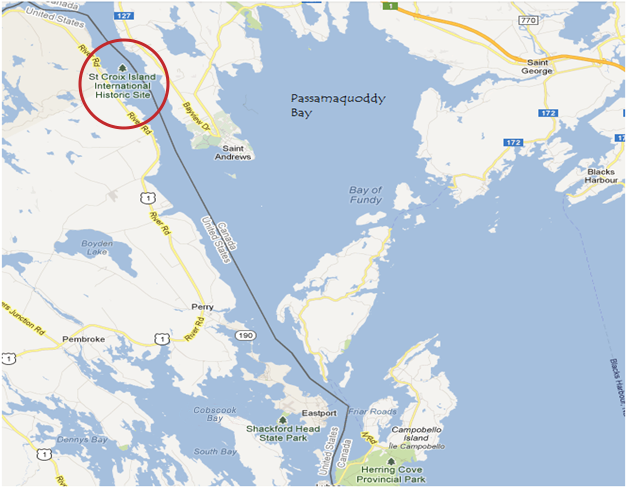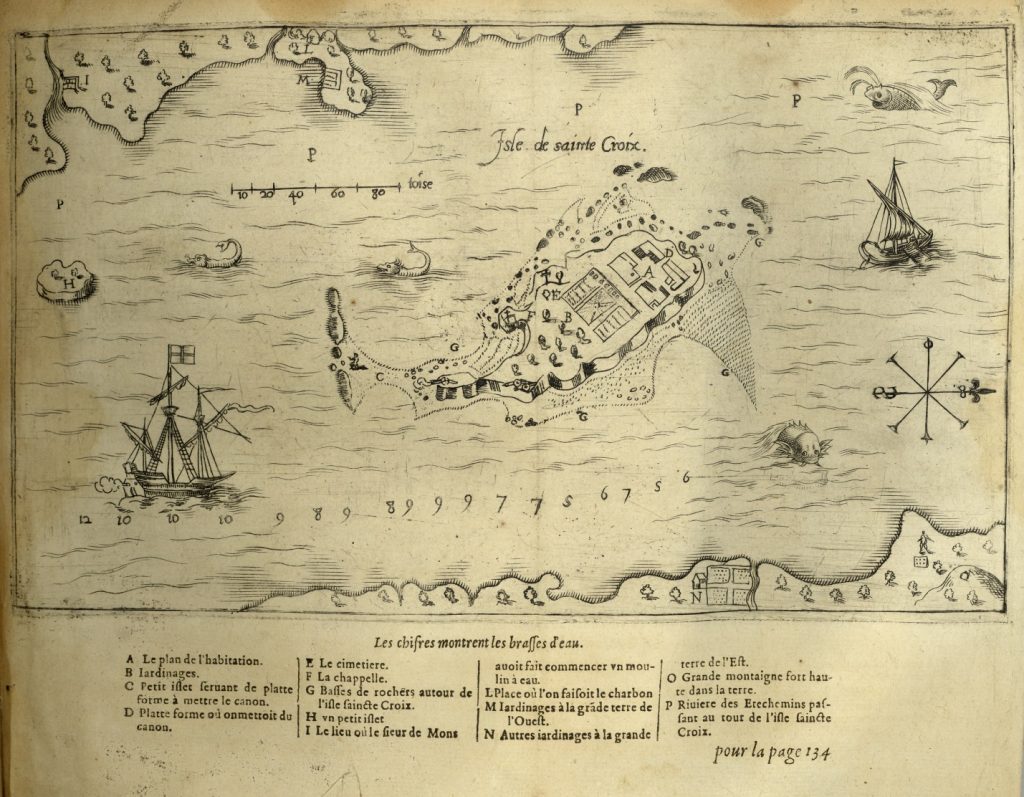Materials required: book Tihtiyas and Jean, projector, whiteboard, logbook
- As an introduction to the arrival of the Europeans and the first interaction with Indigenous people, read the book Tihtiyas and Jean. If possible, read sections of it in Passamaquoddy and French. Ideally, if it was read in these languages when Tihtiyas and Jean interact, it would demonstrate how difficult it would have been for Tihtiyas and Jean to communicate (pp. 22, 26, 28). As you read, have the students make the sound of the wind to indicate the Wind Blower and then to indicate the difference between the sound of a tin flute and a wooden flute which sounds like the wind in the trees. What does the first part of the story tell you about the Passamaquoddy’s relationship to their environment and their habitat?
- Look at the map. Find St. Croix Island where Jean lived. Where do you think Tihtiyas might have lived? Were there roads when this story took place? Provincial or State parks? How did Tihtiyas and Jean travel? Today, what does the dividing line on this map signify for most people travelling? The Passamaquoddy, however, have dual citizenship — their nation was split in two by the settlers’ borders, but it is recognized in both countries.

- In the second part of the story, discuss how Tihtiyas and Jean felt about each other. Were they friends? How did they communicate? How did they help each other out? Did they borrow things or ideas from each other? If there are no Indigenous students in your class, ask a recent immigrant if they would mind saying something to the class in their mother tongue. Then ask the students what they understood. Have them list some of the challenges that come from not knowing what someone else is saying.
- Make a graph with the words that indicate a habitat — food, water, shelter, space. Under each heading write down how Tihtiyas’s and Jean’s habitat differed (where they chose to live). Which habitat proved to be the easiest one to live in? How do you know?

- What does this map drawn by Champlain in 1604 tell you about the community that Jean lived in? Think of the seasons in New Brunswick. Is this location a wise choice?
- Think about the ending of this story. Will Tihtiyas and Jean meet again? Write a new ending where they do meet again. In the new ending include: how old are they now, what has happened in their lives that changes the way they feel about each other. Make sure you use the environment (like the Wind Blower) in your new ending. Are the consequences of their lives together in North America good or bad?
- Now write down in your logbook any questions that you may have about habitats or beliefs that the Passamaquoddy had about their environment.





